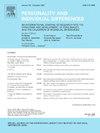内隐自我评价二价:测量与计算
IF 2.6
2区 心理学
Q1 PSYCHOLOGY, SOCIAL
引用次数: 0
摘要
越来越多的证据支持积极和消极内隐自我评价共存,这种现象被称为内隐自我评价二价。尽管这一概念上的进步,该领域缺乏既定的测量方法和计算方法来评估这一结构。本研究(N = 150)采用修订的评估性启动任务来评估这一结构,使用平方欧几里得距离计算内隐自我评价二价,并根据心理健康指标进行验证。结果表明:(1)内隐自我评价二价在修正后的范式中持续存在;(2)内隐自我评价二价越高,心理健康状况越好,表明欧几里得距离的平方是计算内隐自我评价二价的有效公式。这些发现提供了内隐自我评价二价的实证证实,同时为研究自我感知模式与健康结果之间的联系提供了一个实用的方法框架。本文章由计算机程序翻译,如有差异,请以英文原文为准。
Implicit self-evaluation bivalence: Measurement and computation
A growing body of evidence supports the coexistence of positive and negative implicit self-evaluations, a phenomenon termed implicit self-evaluation bivalence. Despite this conceptual advancement, the field lacks established measurement approaches and computational methods for assessing this construct. This study (N = 150) employed a revised evaluative priming task to assess this construct, computing implicit self-evaluation bivalence using squared Euclidean distance and validating against mental health indicators. Results demonstrated that (1) implicit self-evaluation bivalence persisted in the revised paradigm, and (2) higher implicit self-evaluation bivalence correlated with greater mental health, suggesting that the squared Euclidean distance is a valid formula for calculating implicit self-evaluation bivalence. These findings provide empirical confirmation of implicit self-evaluation bivalence while offering researchers a practical methodological framework for investigating connections between self-perception patterns and health outcomes.
求助全文
通过发布文献求助,成功后即可免费获取论文全文。
去求助
来源期刊

Personality and Individual Differences
PSYCHOLOGY, SOCIAL-
CiteScore
8.50
自引率
4.70%
发文量
577
审稿时长
41 days
期刊介绍:
Personality and Individual Differences is devoted to the publication of articles (experimental, theoretical, review) which aim to integrate as far as possible the major factors of personality with empirical paradigms from experimental, physiological, animal, clinical, educational, criminological or industrial psychology or to seek an explanation for the causes and major determinants of individual differences in concepts derived from these disciplines. The editors are concerned with both genetic and environmental causes, and they are particularly interested in possible interaction effects.
 求助内容:
求助内容: 应助结果提醒方式:
应助结果提醒方式:


